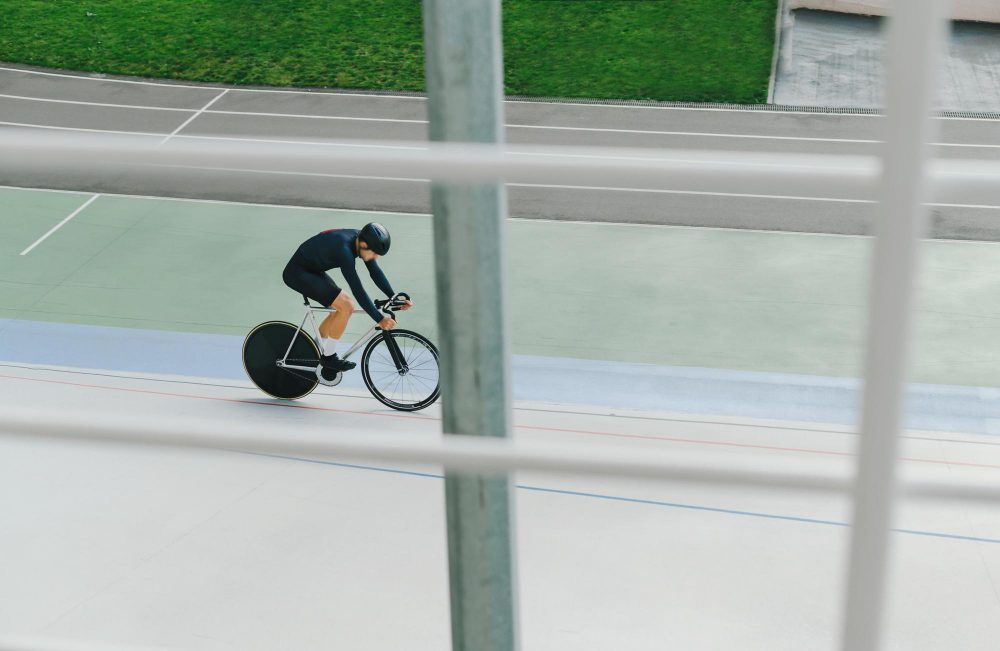How can I increase my sprint speed in 2 weeks?
Sprinting speed is a crucial aspect of many sports and improving it can give you a competitive edge. While significant improvements in sprint speed may take time and consistent effort, there are several strategies you can implement to see noticeable progress in just two weeks. This article will provide you with expert tips and guidance on how to enhance your sprint speed effectively and safely within a short timeframe.
The Importance of Proper Warm-up
A proper warm-up routine is vital before any sprinting session as it prepares your muscles for the intense activity ahead. Warming up increases blood flow, loosens up your muscles, and enhances range of motion, allowing you to sprint more efficiently. Include dynamic stretches, such as leg swings and lunges, to warm up key muscle groups like the hamstrings, quadriceps, and calves.
Quote: “A good warm-up routine is the foundation for a successful sprint training session.”
Optimize Your Running Technique
Improving your sprint technique can lead to significant speed gains. Focus on maintaining an upright posture, with your head facing forward and shoulders relaxed. Drive your arms back and forth in a coordinated manner, and ensure your foot strikes the ground with your mid-foot. Engaging your core muscles and practicing explosive push-offs with each stride will help you generate more power and increase your speed.
Interval Training for Sprint Speed
Interval training is a highly effective method for increasing sprint speed in a short period. By alternating between high-intensity sprints and short recovery periods, you can improve your body’s ability to perform at maximum speed. For example, you could perform a series of 30-second sprints followed by one minute of active recovery, and repeat this sequence multiple times during a training session.
Strength and Power Training
Improving your strength and power can translate into faster sprint times. Incorporate exercises like squats, lunges, deadlifts, and plyometric movements into your training routine. These exercises target key muscle groups involved in sprinting and help develop explosive power, necessary for quick acceleration. Remember to maintain proper form and gradually increase the resistance or intensity of your workouts as you progress.
Proper Rest and Recovery
Allowing adequate time for rest and recovery is crucial when aiming to improve sprint speed. Overtraining can lead to decreased performance and an increased risk of injury. Ensure you have rest days between intense sprinting sessions to give your muscles time to repair and strengthen. Additionally, prioritize quality sleep to enhance recovery and optimize your body’s ability to adapt to your training efforts.
Implementing Nutrition Strategies
Proper nutrition plays a significant role in supporting your sprint training and maximizing performance. Aim for a balanced diet that includes lean proteins, complex carbohydrates, and healthy fats. Stay hydrated before, during, and after your training sessions, and consider incorporating pre- and post-workout snacks that provide the necessary energy and nutrients for optimal performance.
Tracking Progress and Setting Goals
To effectively increase your sprint speed in two weeks, it’s essential to track your progress and set achievable goals. Regularly measure your sprint times and distances to gauge your improvement. Use this data to adjust your training plan and set realistic targets for further enhancement. By monitoring your progress, you can stay motivated and make necessary adjustments to your training strategies.
In conclusion, while significant improvements in sprint speed often take time, implementing these strategies can help you see noticeable progress within just two weeks. Focus on proper warm-up routines, optimize your running technique, incorporate interval training and strength exercises, prioritize rest and recovery, implement nutrition strategies, and track your progress. Remember, consistency and commitment are key to achieving your sprint speed goals.
How can I become a faster sprinter?
Sprinting is an exhilarating sport that requires speed, power, and technique. Whether you are an aspiring athlete or simply looking to improve your running abilities, there are several steps you can take to become a faster sprinter.
1. Warm-up and Cool-down
Before every sprinting session, it is crucial to warm up your muscles and joints to reduce the risk of injury. Dynamic stretches, such as leg swings and lunges, are ideal for increasing flexibility and range of motion. Additionally, after your sprinting workout, a proper cool-down routine, including static stretches, will help prevent muscle soreness and aid in recovery.
2. Strength Training
Incorporating strength training into your fitness routine is essential for sprinters. Exercises like squats, lunges, and deadlifts can help build lower body strength and power, which directly translates to faster sprint times. Aim for two to three strength training sessions per week, focusing on compound movements that target multiple muscle groups simultaneously.
3. Technique and Form
Mastering proper sprinting technique and form can significantly improve your speed. Focus on driving your knees up, maintaining an upright posture, and striking the ground with the balls of your feet. Engaging your core and pumping your arms vigorously will also contribute to a faster sprint. Consider working with a coach or watching instructional videos to fine-tune your technique.
4. Interval Training
Interval training involves alternating between high-intensity sprints and periods of active recovery. This type of training is highly effective for improving speed and endurance. A typical interval training session could include 8-10 sets of 30-second sprints followed by 60 seconds of light jogging or walking. Gradually increase the intensity and duration of your sprints as your fitness level improves.
5. Mental Focus and Visualization
The mental aspect of sprinting should not be overlooked. Developing a strong mindset and visualizing success can enhance your performance on the track. Use positive self-talk, set specific goals, and imagine yourself crossing the finish line with speed and confidence. Remember, a strong belief in your abilities can often make the difference in achieving your sprinting goals.
“Success is no accident. It is hard work, perseverance, learning, studying, sacrifice, and most of all, love of what you are doing or learning to do.” – Pele
By incorporating these tips into your training regimen and staying consistent, you can become a faster sprinter and reach new personal bests. Remember to listen to your body, stay hydrated, and allow for proper rest and recovery to avoid overtraining. Happy sprinting!
| Routine | Suggestion |
|---|---|
| Warm-up | Dynamic stretches: leg swings, lunges |
| Strength Training | Squats, lunges, deadlifts |
| Interval Training | 8-10 sets of 30-second sprints followed by 60 seconds of light jogging |
| Cool-down | Static stretches |
- Warm up your muscles and joints before each sprinting session.
- Incorporate strength training exercises into your fitness routine.
- Focus on mastering proper sprinting technique and form.
- Include interval training in your workouts to improve speed and endurance.
- Develop a strong mental focus and visualize success.
How do you get a sprinter body?
The Benefits of Sprinting
Sprinting is an intense form of exercise that can help you achieve a lean and fit physique. Not only does it help you burn calories and shed excess fat, but it also helps build strong muscles and increase cardiovascular endurance. Sprinting engages multiple muscle groups, including the legs, core, and upper body, making it a great full-body workout.
Training for Sprinting
To achieve a sprinter body, it’s essential to incorporate specific training techniques into your fitness routine:
- Sprint Intervals: Incorporate high-intensity sprint intervals into your runs. Start with shorter distances and gradually increase the length and intensity over time.
- Resistance Training: Include strength training exercises such as squats, lunges, and deadlifts to build strong leg muscles.
- Plyometric Exercises: Jumping exercises like box jumps and burpees can help improve explosive power and speed.
Nutrition for Sprinters
Achieving a sprinter body also requires paying attention to your nutrition:
- Protein Intake: Make sure to consume enough protein to support muscle growth and repair. Good sources include lean meats, fish, eggs, and plant-based proteins.
- Carbohydrates: Fuel your workouts with complex carbohydrates like whole grains, fruits, and vegetables for sustained energy.
- Hydration: Stay properly hydrated to support performance and recovery.
Rest and Recovery
Rest and recovery are vital components of any training program:
“Listen to your body. Take rest days when needed to prevent injuries and allow your muscles to recover.”
Ensure you get enough sleep, as it plays a crucial role in muscle repair and growth. Incorporate stretching and foam rolling into your routine to help alleviate muscle soreness and improve flexibility.
How to Train for the 100M Sprint in 2 Weeks?
Introduction
The 100-meter sprint is one of the most exciting events in athletics. While it takes years of practice and training to become a top-class sprinter, there are still some strategies you can employ to improve your performance in just two weeks. Whether you’re preparing for a school sports day or a local competition, this article will provide you with tips and techniques to enhance your sprinting abilities.
1. Warm Up Properly
Before any training session, it’s crucial to warm up your muscles and prepare your body for the intense sprinting ahead. A dynamic warm-up routine that includes exercises such as jogging, lunges, high knees, and leg swings will help increase blood flow, loosen up your muscles, and reduce the risk of injury.
2. Focus on Technique
Proper sprinting technique is essential to maximize speed and efficiency. Keep your body in an upright position, relax your shoulders, and maintain a strong arm drive. Practice short bursts of sprints focusing on proper form, gradually increasing your speed over time. Remember to maintain a quick turnover rate by driving your knees forward and landing on the balls of your feet.
3. Interval Training
Interval training involves alternating between intense bursts of sprinting and recovery periods. This method helps improve both anaerobic capacity and speed endurance, which are essential for the 100-meter sprint. For example, try running at maximum effort for 30 seconds, followed by a one-minute recovery jog. Repeat this cycle several times during your training sessions.
4. Strength and Power Exercises
Building strength and power in your lower body can greatly enhance your sprinting performance. Incorporate exercises such as squats, lunges, calf raises, and plyometric drills into your training routine. These exercises help develop explosive power and increase muscle strength, allowing you to generate more force with each stride.
5. Rest and Recovery
While it’s important to push yourself during training, it’s equally crucial to allow your body to rest and recover. Overtraining can lead to fatigue, increased risk of injury, and hindered performance. Make sure to incorporate rest days into your training schedule and prioritize sleep to aid in muscle recovery.
Remember:
“Successful sprinting requires a combination of physical preparation, mental focus, and proper technique”
By following these tips and dedicating yourself to consistent training, you can make significant improvements in your 100-meter sprint performance within a two-week timeframe. However, it’s essential to manage your expectations and understand that long-term progress usually takes time and patience. Good luck!
What is the Physique of a Sprinter?
Sprinters are known for their impressive physiques, which are finely tuned for explosive speed and power. These athletes possess a unique combination of muscular strength, cardiovascular fitness, and agility. Let’s take a closer look at the key characteristics of a sprinter’s physique.
Muscular Development
Sprinters have well-developed muscles, particularly in their lower body. The quadriceps, hamstrings, and calf muscles are heavily engaged during sprinting, enabling quick and forceful leg movements. The glutes are also important for generating power. Additionally, sprinters often have a strong upper body, especially in the shoulders and arms, to facilitate arm drive and maintain balance while running.
Body Composition
Sprinters have low body fat percentages and high muscle mass. This combination helps them maximize power-to-weight ratio, allowing for faster acceleration and greater speed. Their lean bodies minimize drag, optimizing aerodynamics during sprints.
Height and Limb Length
While sprinters come in various heights, shorter limb lengths tend to be advantageous for acceleration. Shorter legs and arms require less energy to move, enabling sprinters to generate explosive bursts of speed. However, longer limbs can be beneficial for maintaining top speed, as they cover more ground with each stride.
Flexibility and Range of Motion
Sprinters need good flexibility and range of motion to achieve optimal running technique. This allows them to generate longer strides, improve stride frequency, and reduce the risk of injury. Sprinters often focus on dynamic stretching exercises to enhance flexibility.
“Sprinters are finely tuned machines, with powerful muscles, low body fat, and exceptional flexibility.”
Overall, the physique of a sprinter reflects the specialized training required for their sport. Their muscular development, body composition, limb length, and flexibility all play significant roles in their ability to produce explosive speed.
Conclusion
Getting a sprinter body requires a combination of intense training, proper nutrition, and adequate rest and recovery. By incorporating sprint intervals, resistance training, plyometrics, and following a balanced diet, you can achieve a lean and athletic physique. Remember to listen to your body, prioritize rest, and stay consistent with your training to see long-term results.



